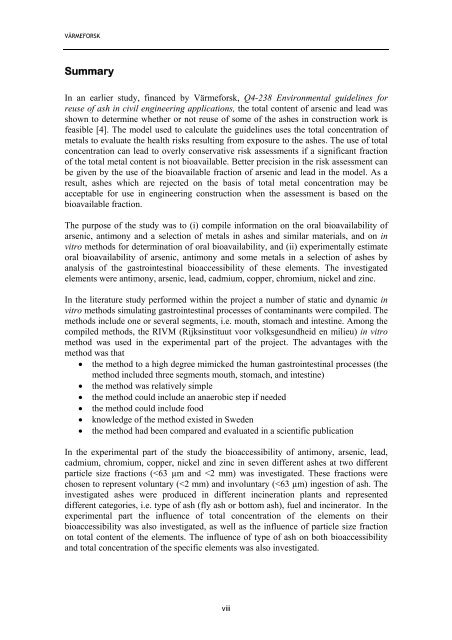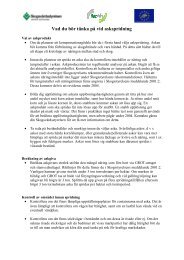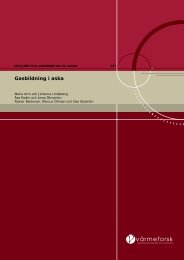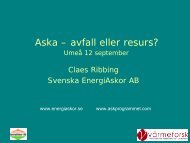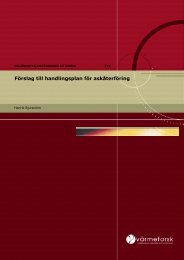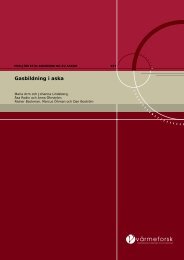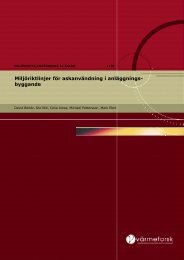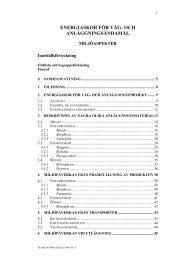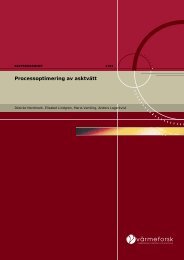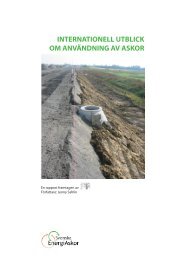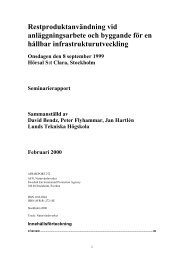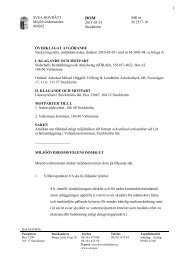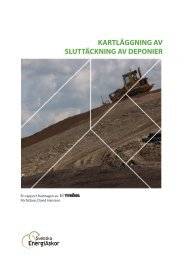Rapport 1056 In vitro.pdf - Svenska EnergiAskor AB
Rapport 1056 In vitro.pdf - Svenska EnergiAskor AB
Rapport 1056 In vitro.pdf - Svenska EnergiAskor AB
Create successful ePaper yourself
Turn your PDF publications into a flip-book with our unique Google optimized e-Paper software.
VÄRMEFORSK<br />
S/**&%0<br />
<strong>In</strong> an earlier study, financed by VRrmeforsk, Q4-238 Environmental guidelines for<br />
reuse of ash in civil engineering applications, the total content of arsenic and lead was<br />
shown to determine whether or not reuse of some of the ashes in construction work is<br />
feasible a4b. The model used to calculate the guidelines uses the total concentration of<br />
metals to evaluate the health risks resulting from exposure to the ashes. The use of total<br />
concentration can lead to overly conservative risk assessments if a significant fraction<br />
of the total metal content is not bioavailable. Better precision in the risk assessment can<br />
be given by the use of the bioavailable fraction of arsenic and lead in the model. As a<br />
result, ashes which are rejected on the basis of total metal concentration may be<br />
acceptable for use in engineering construction when the assessment is based on the<br />
bioavailable fraction.<br />
The purpose of the study was to (i) compile information on the oral bioavailability of<br />
arsenic, antimony and a selection of metals in ashes and similar materials, and on in<br />
<strong>vitro</strong> methods for determination of oral bioavailability, and (ii) experimentally estimate<br />
oral bioavailability of arsenic, antimony and some metals in a selection of ashes by<br />
analysis of the gastrointestinal bioaccessibility of these elements. The investigated<br />
elements were antimony, arsenic, lead, cadmium, copper, chromium, nickel and zinc.<br />
<strong>In</strong> the literature study performed within the project a number of static and dynamic in<br />
<strong>vitro</strong> methods simulating gastrointestinal processes of contaminants were compiled. The<br />
methods include one or several segments, i.e. mouth, stomach and intestine. Among the<br />
compiled methods, the RIVM (Rijksinstituut voor volksgesundheid en milieu) in <strong>vitro</strong><br />
method was used in the experimental part of the project. The advantages with the<br />
method was that<br />
! the method to a high degree mimicked the human gastrointestinal processes (the<br />
method included three segments mouth, stomach, and intestine)<br />
! the method was relatively simple<br />
! the method could include an anaerobic step if needed<br />
! the method could include food<br />
! knowledge of the method existed in Sweden<br />
! the method had been compared and evaluated in a scientific publication<br />
<strong>In</strong> the experimental part of the study the bioaccessibility of antimony, arsenic, lead,<br />
cadmium, chromium, copper, nickel and zinc in seven different ashes at two different<br />
particle size fractions (c63 dm and c2 mm) was investigated. These fractions were<br />
chosen to represent voluntary (c2 mm) and involuntary (c63 dm) ingestion of ash. The<br />
investigated ashes were produced in different incineration plants and represented<br />
different categories, i.e. type of ash (fly ash or bottom ash), fuel and incinerator. <strong>In</strong> the<br />
experimental part the influence of total concentration of the elements on their<br />
bioaccessibility was also investigated, as well as the influence of particle size fraction<br />
on total content of the elements. The influence of type of ash on both bioaccessibility<br />
and total concentration of the specific elements was also investigated.<br />
viii


